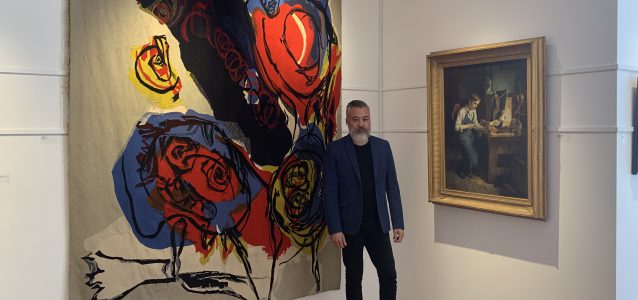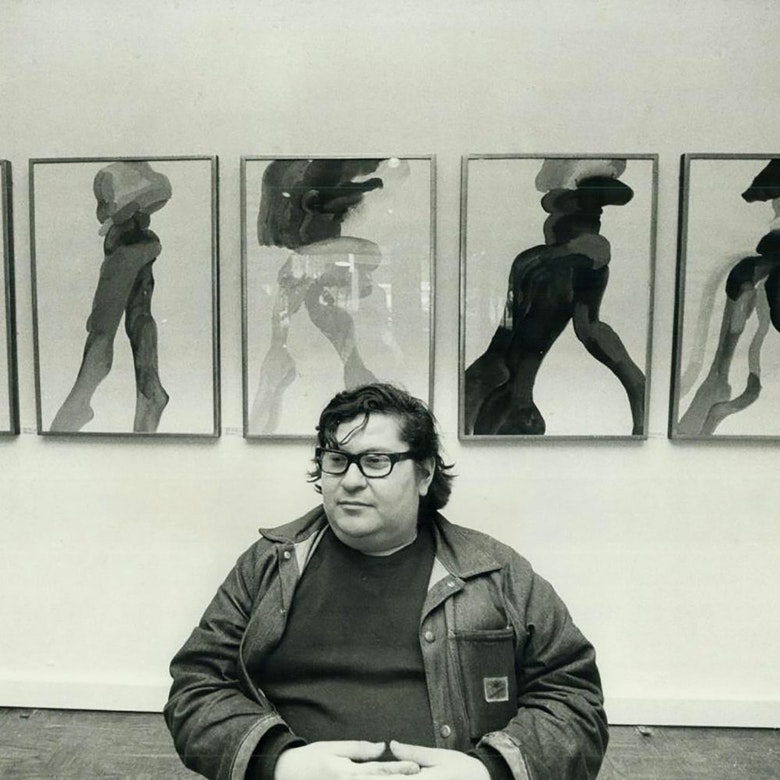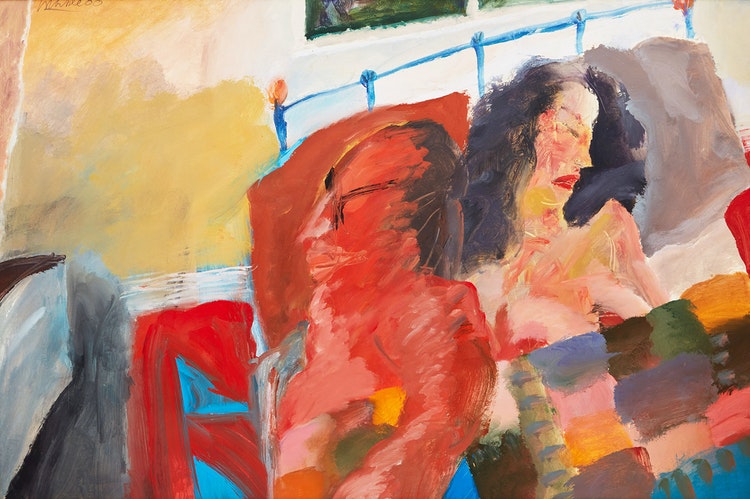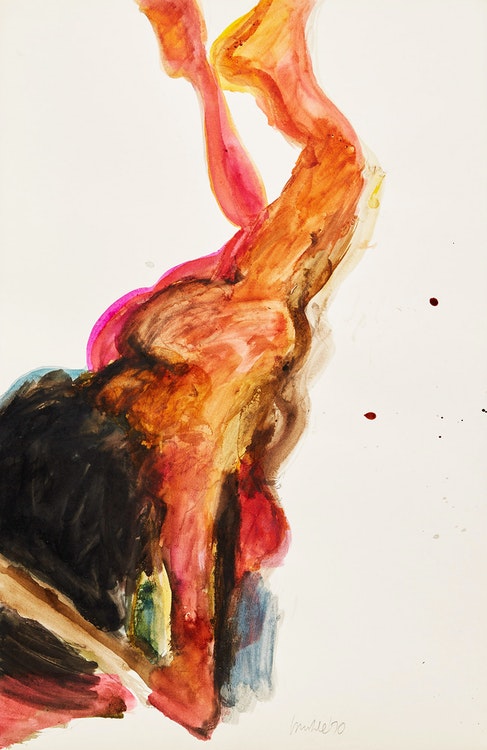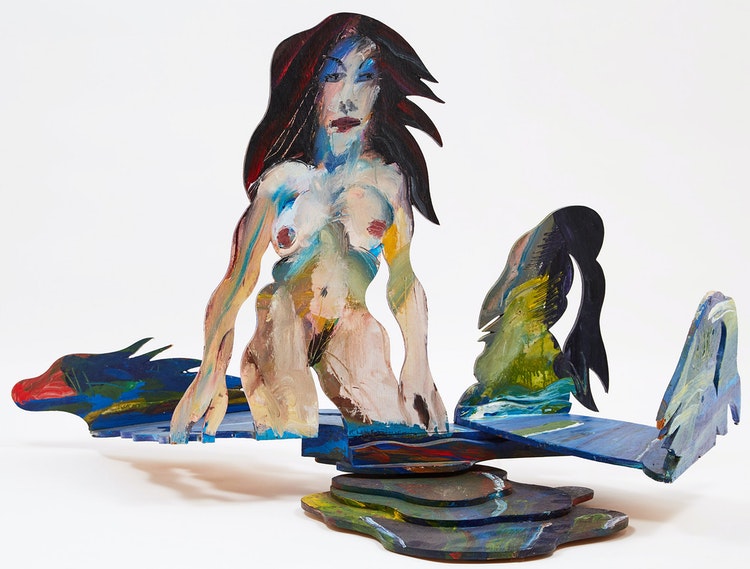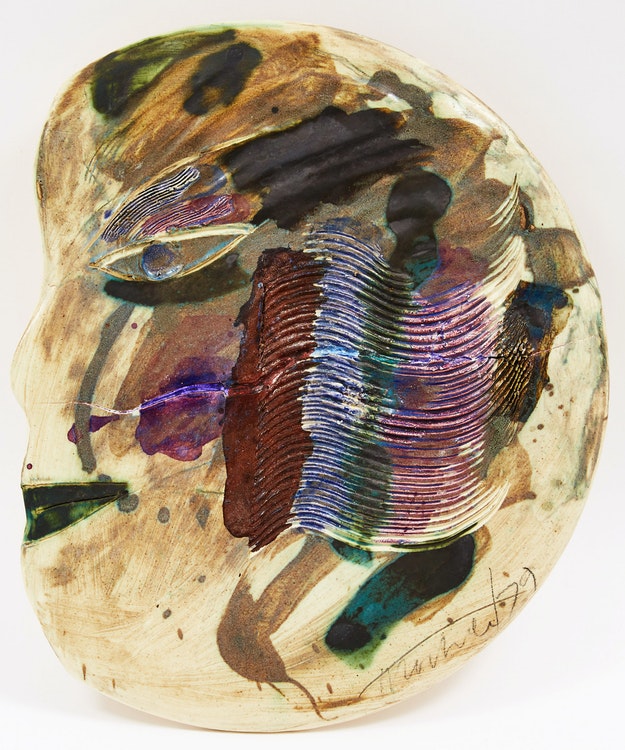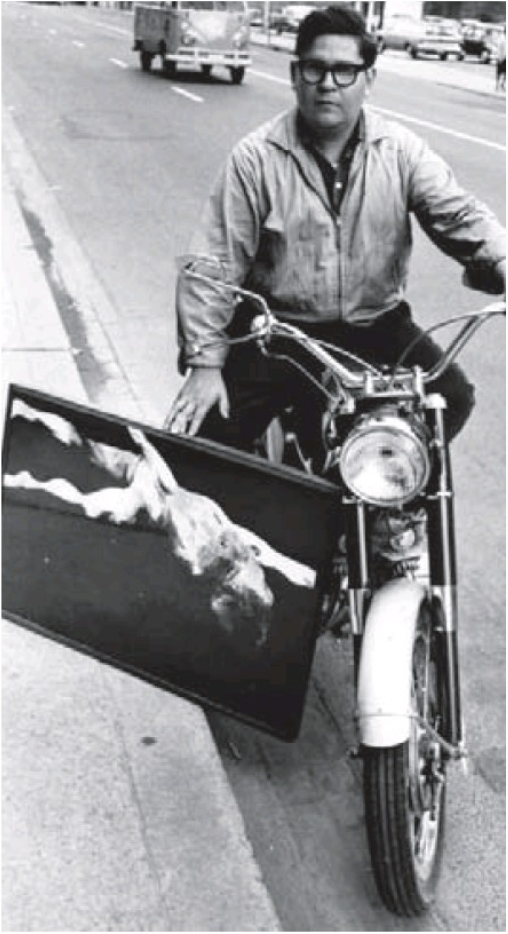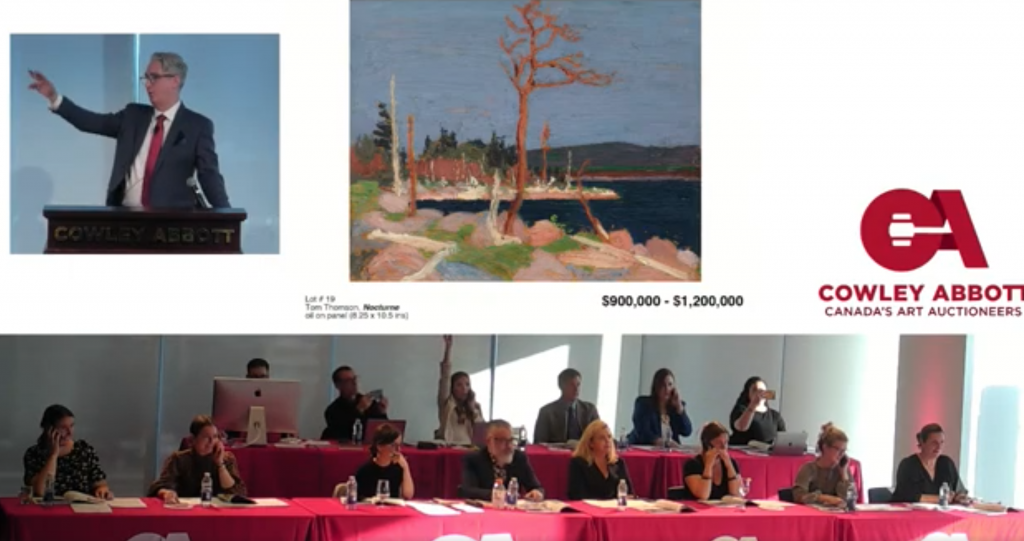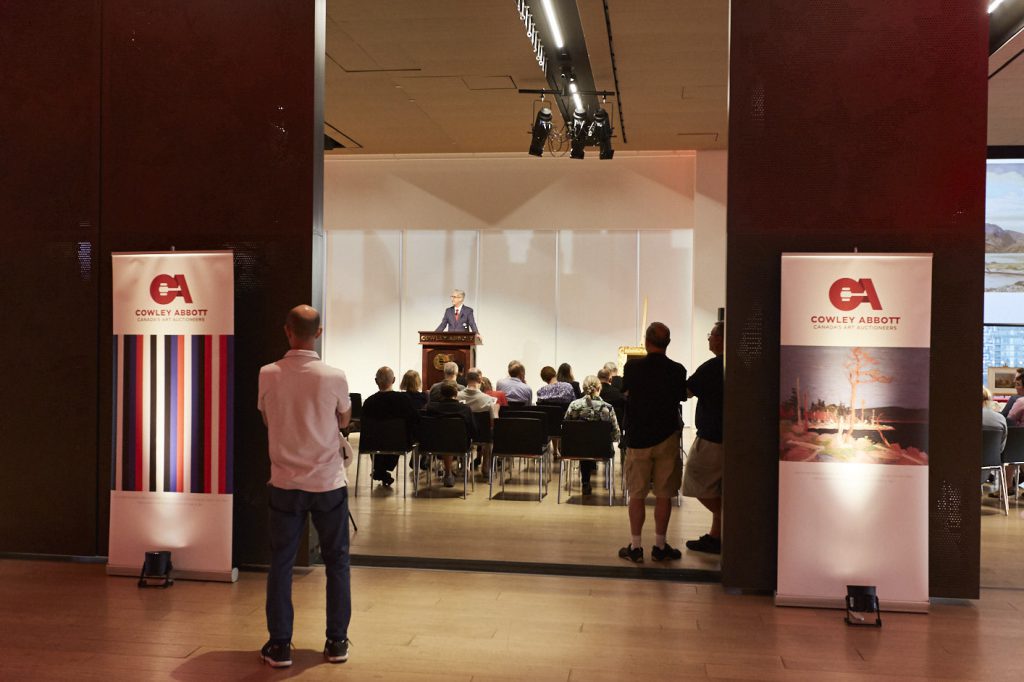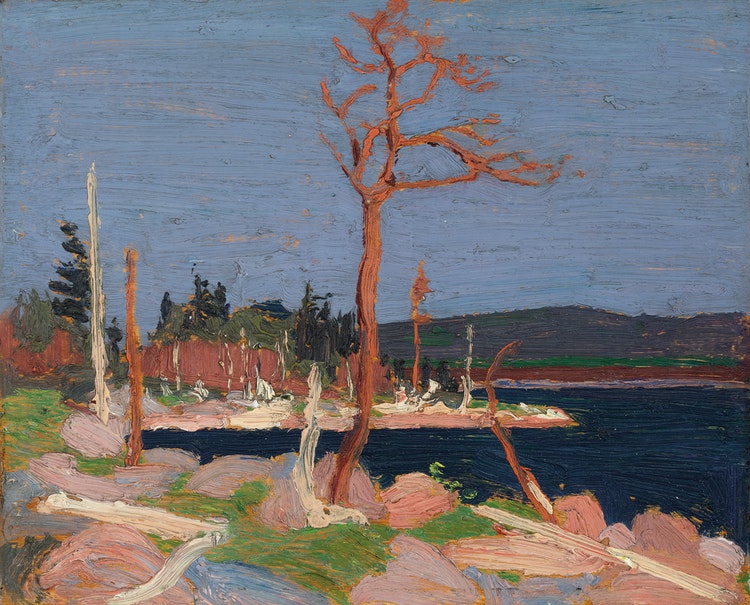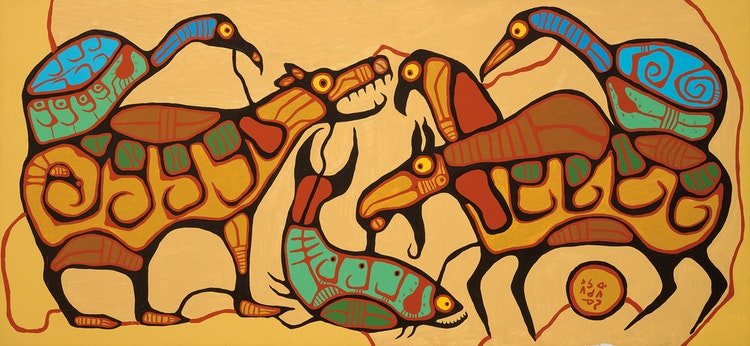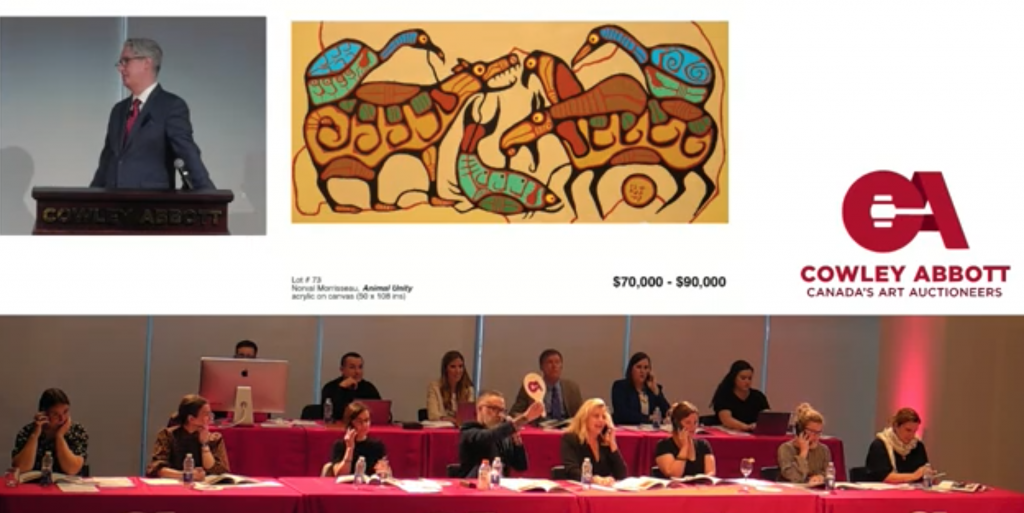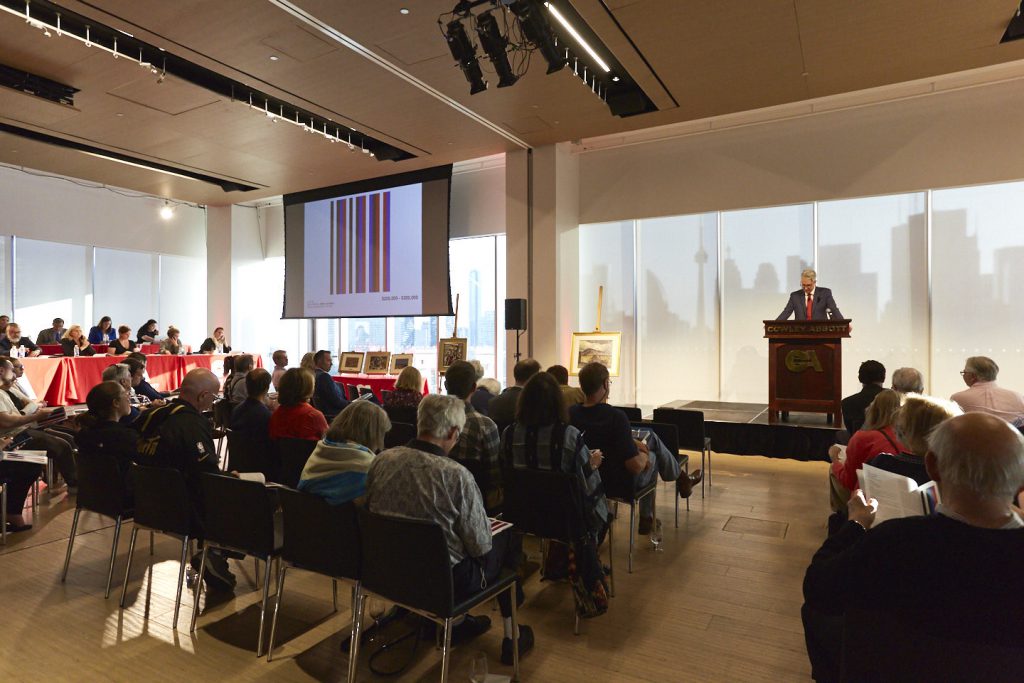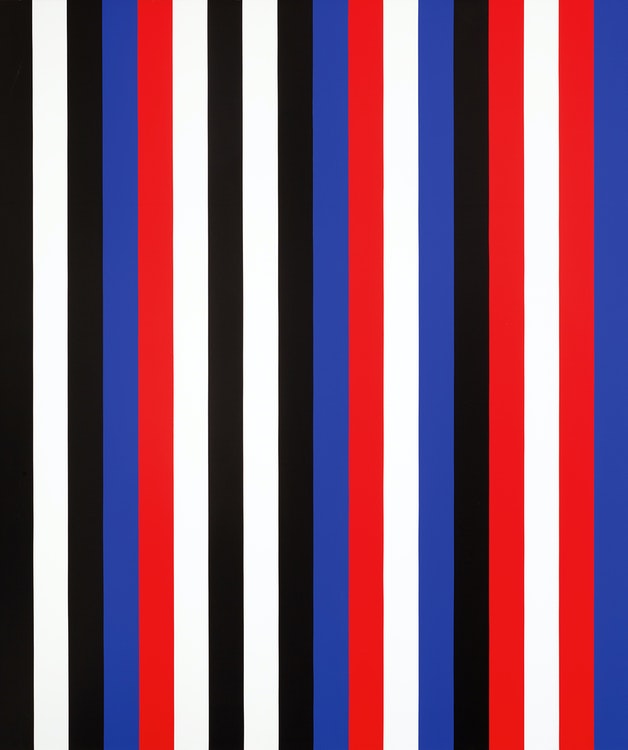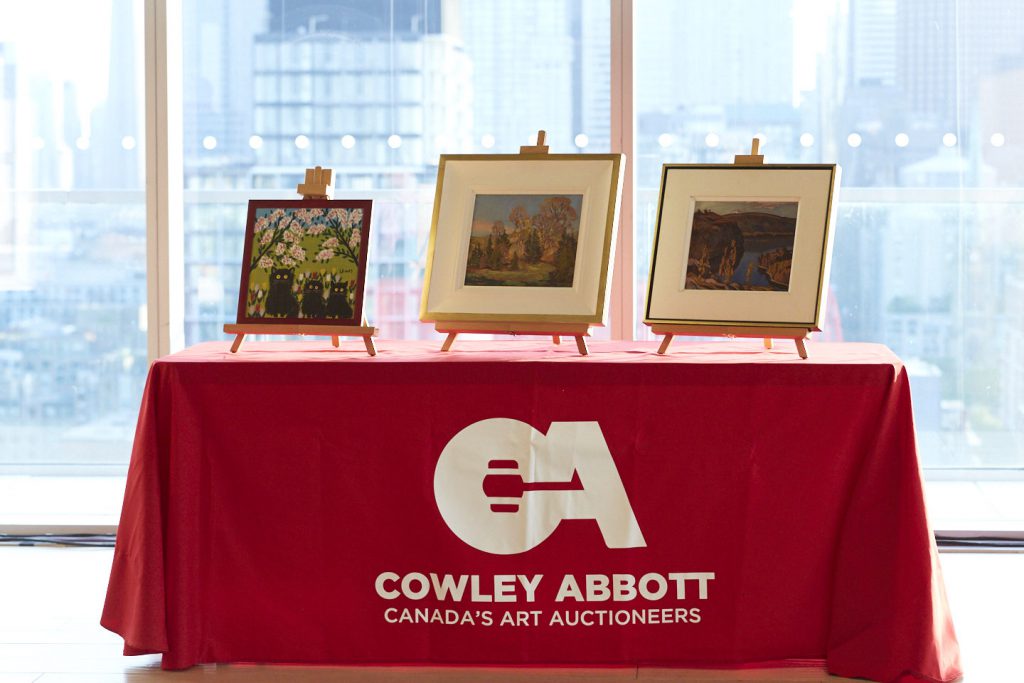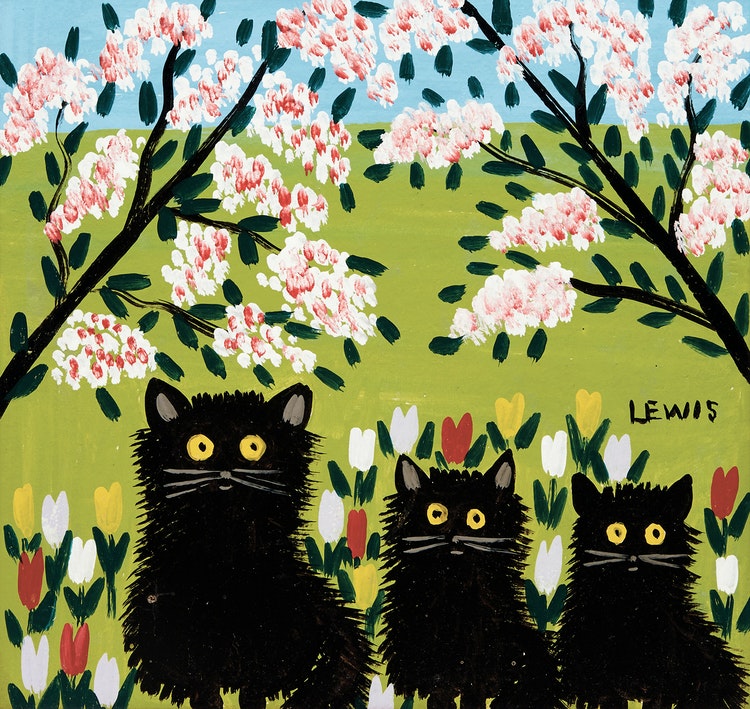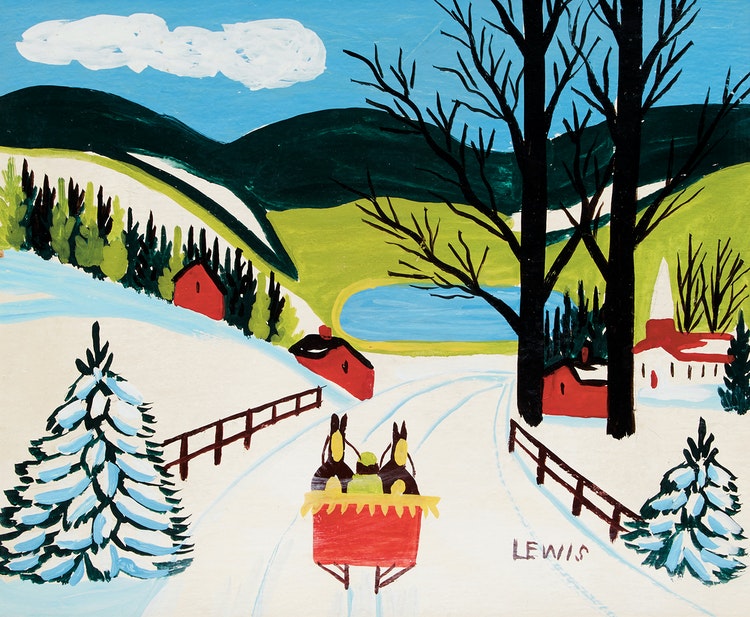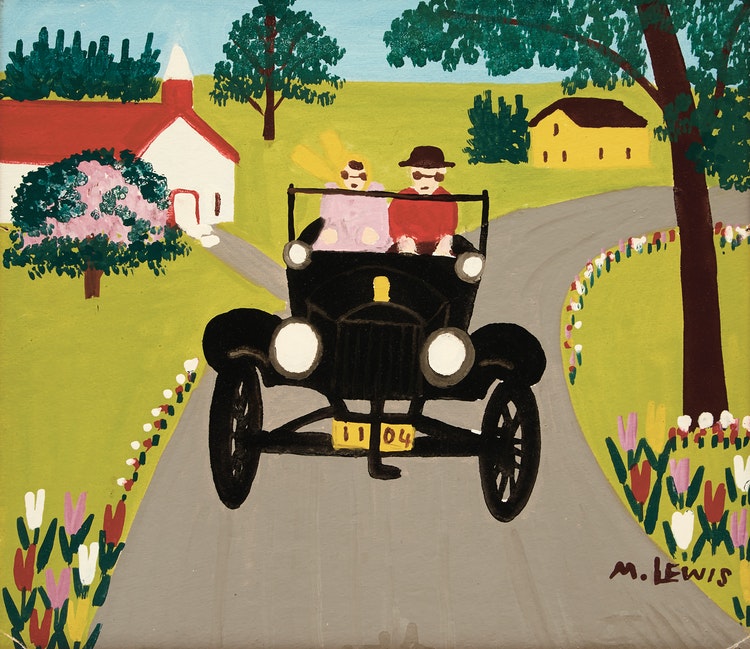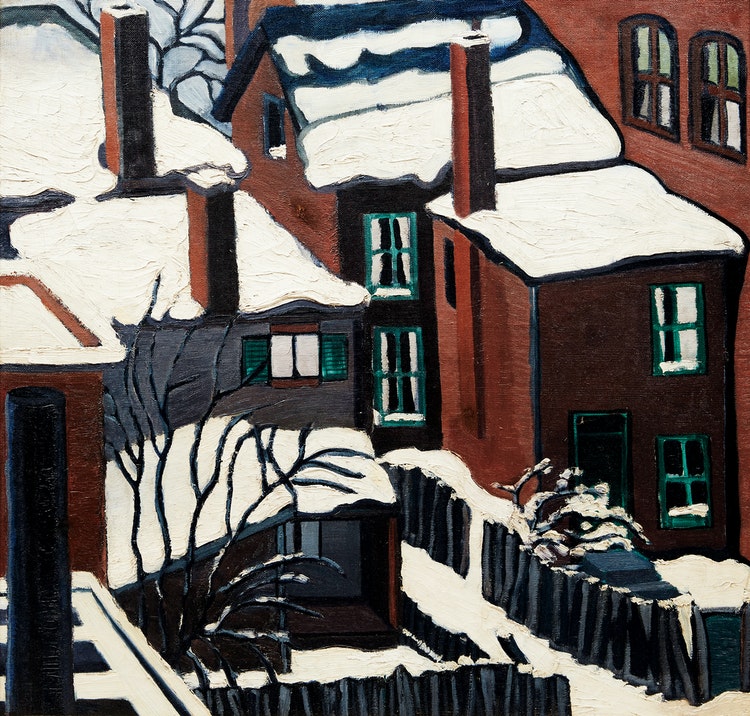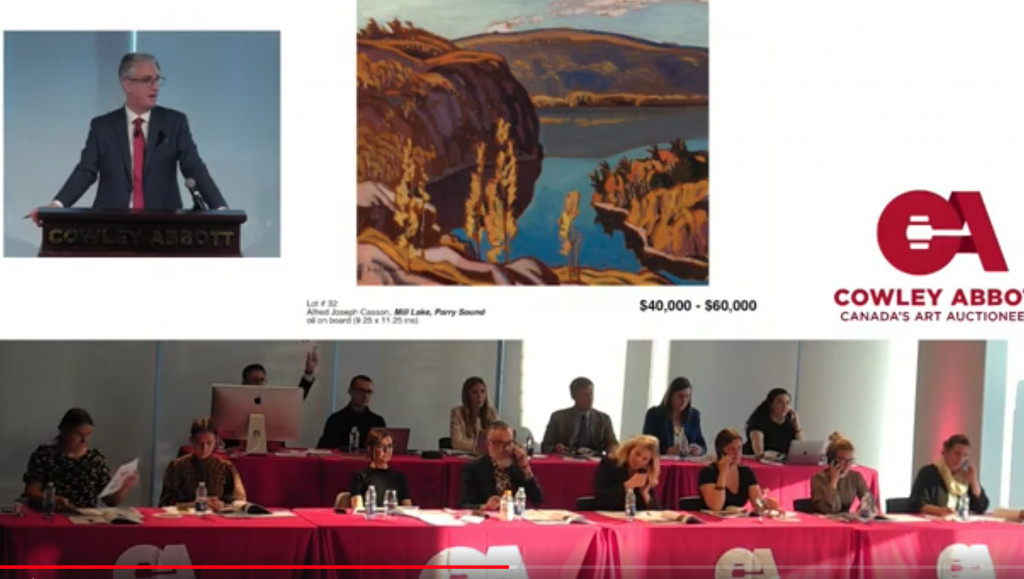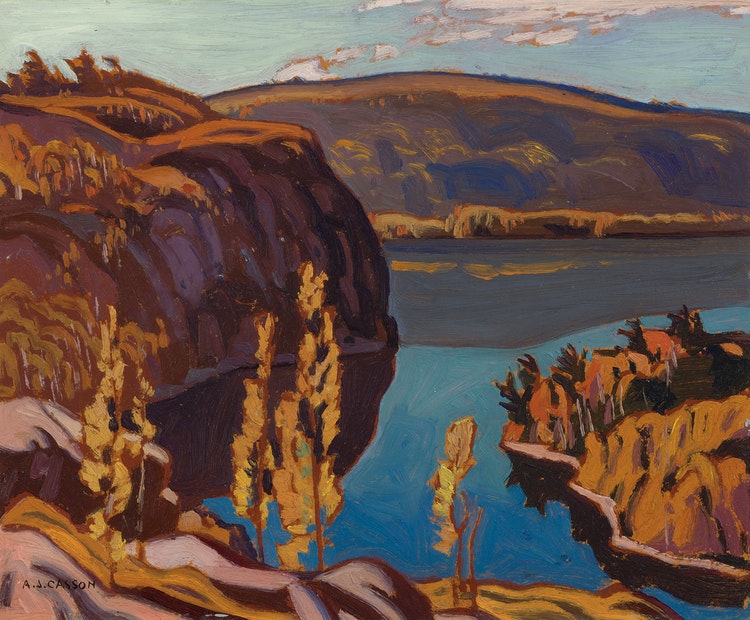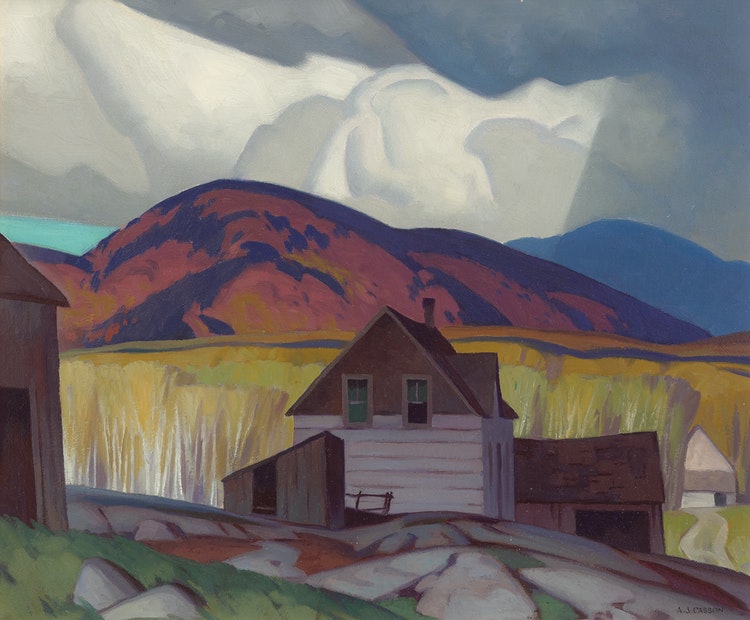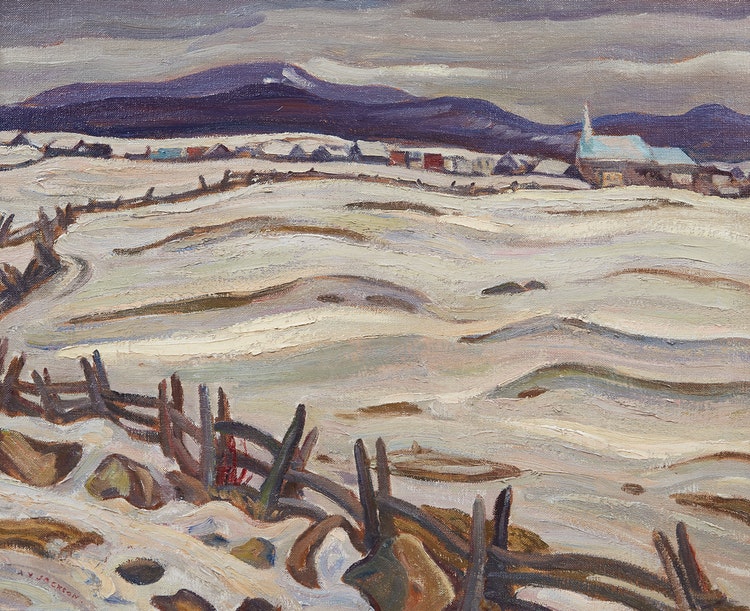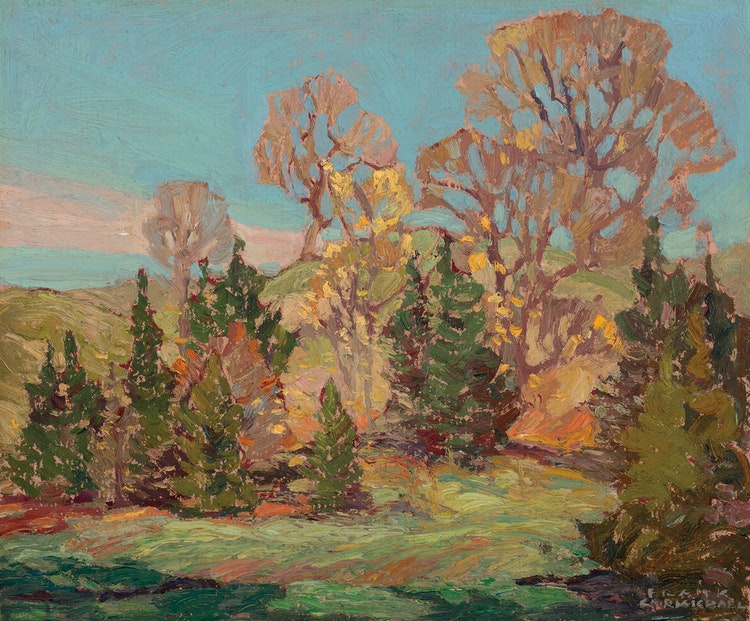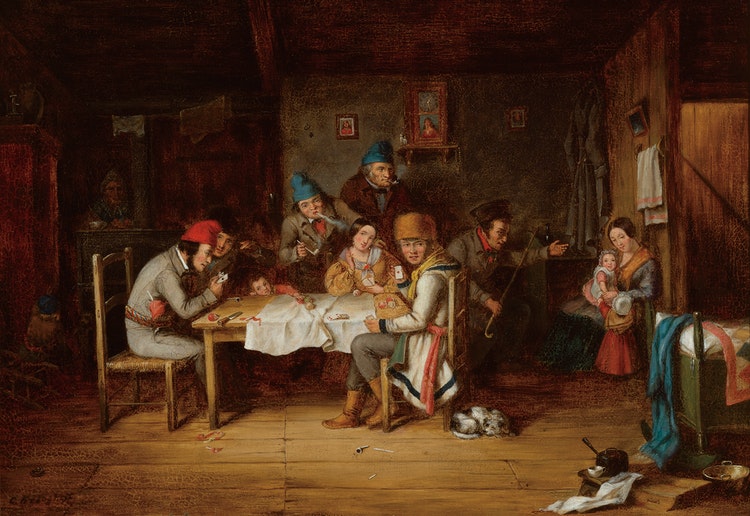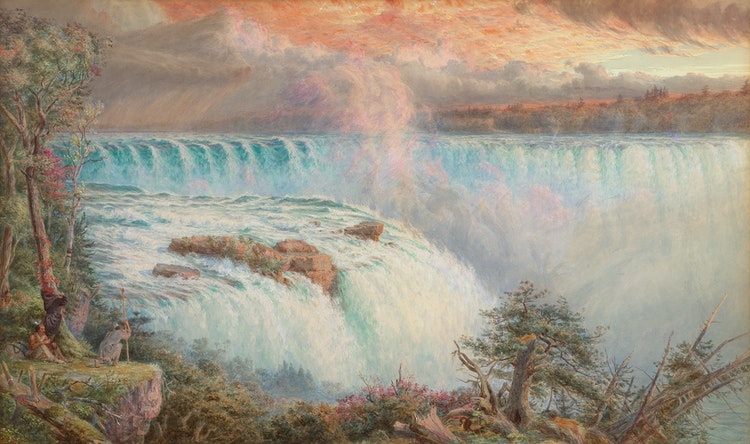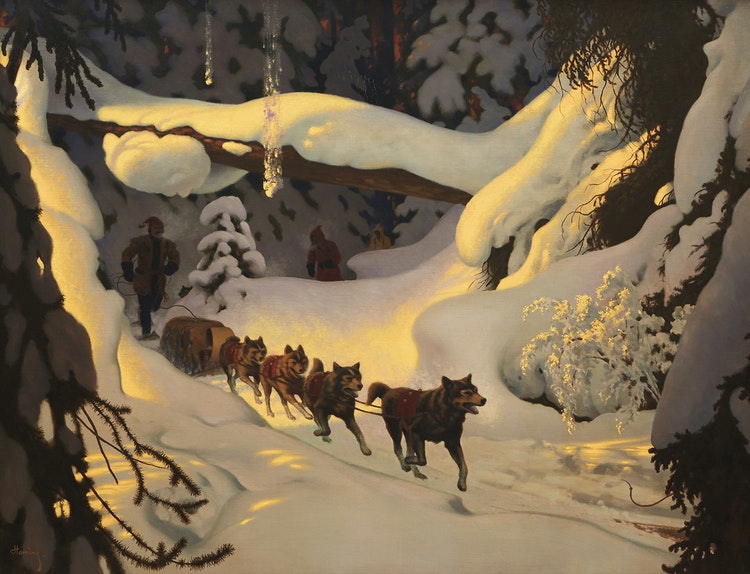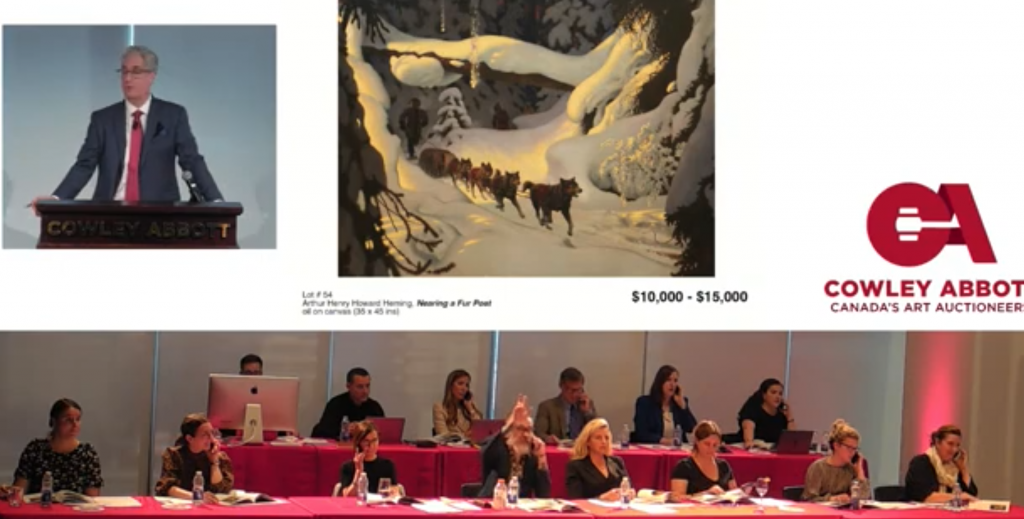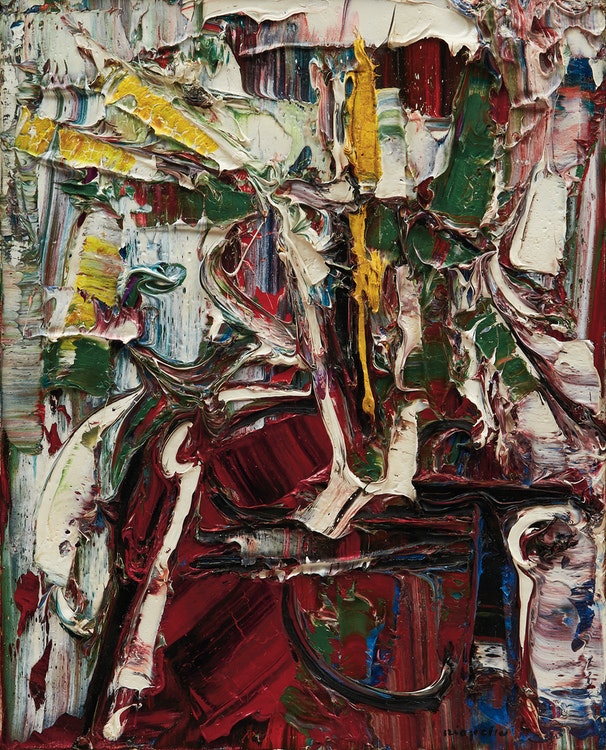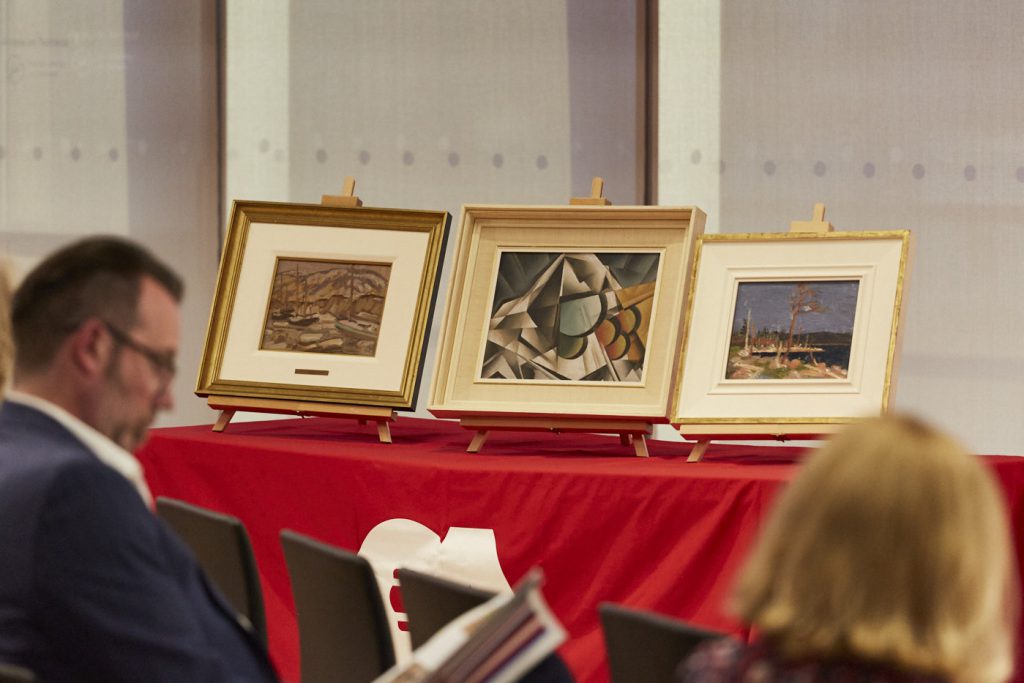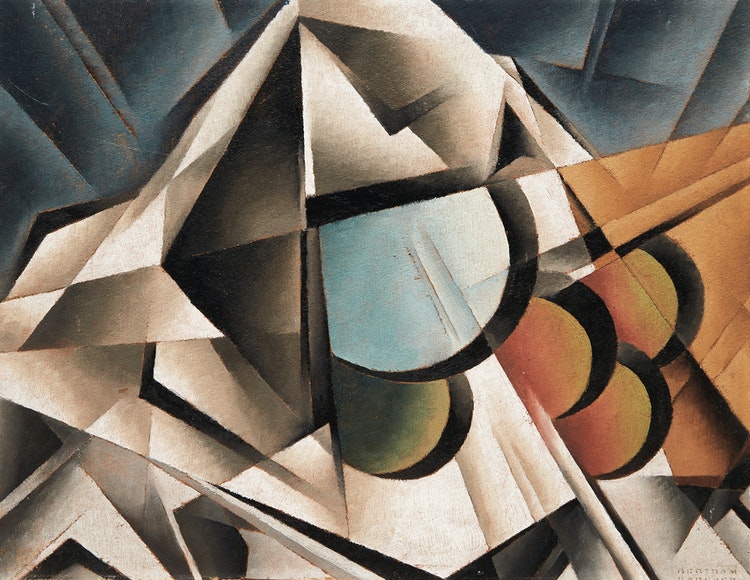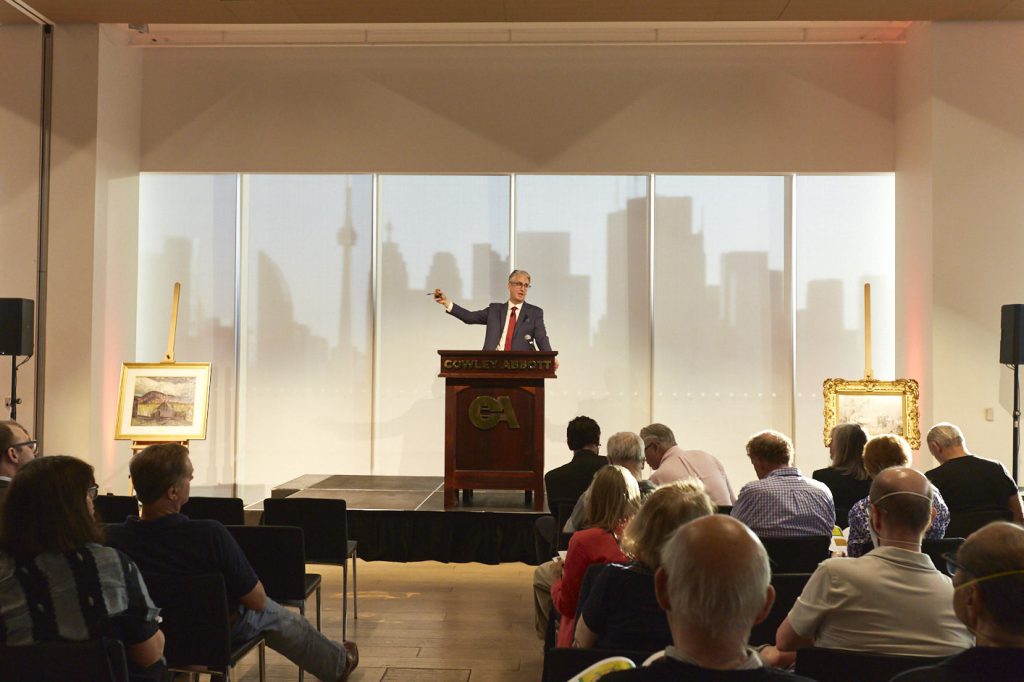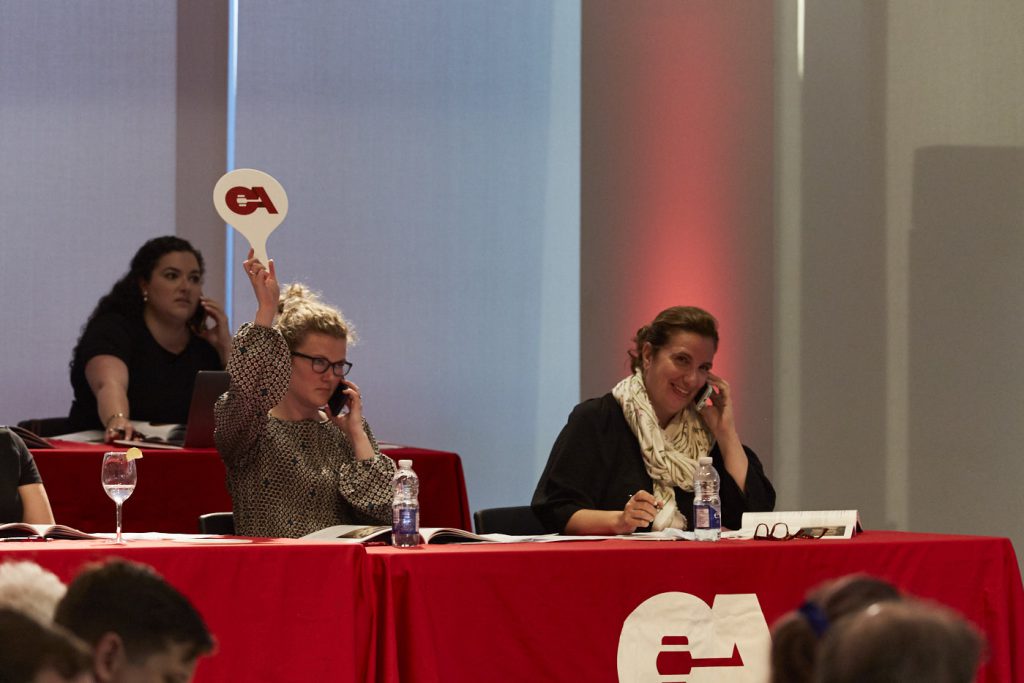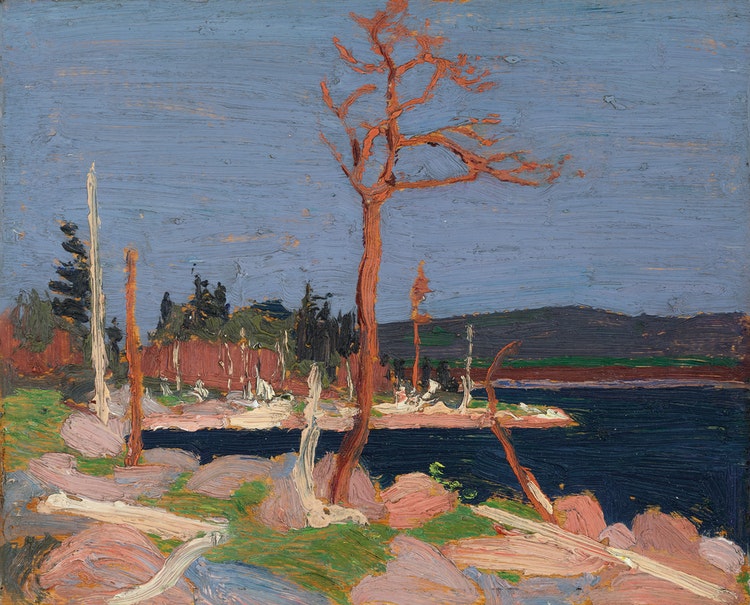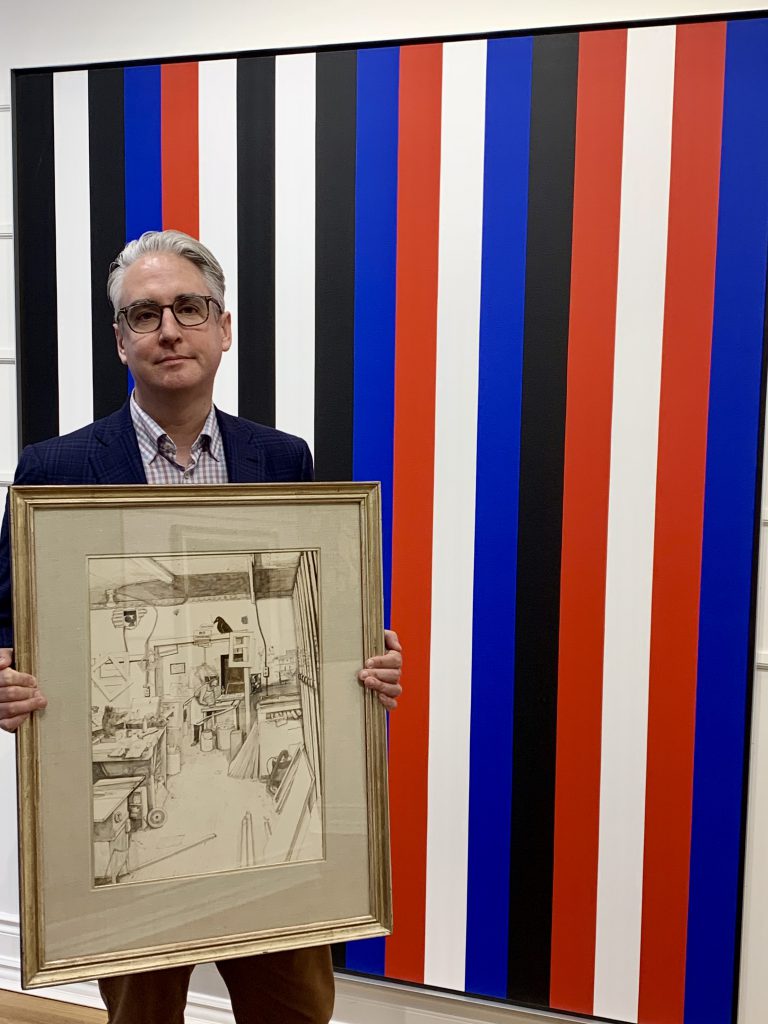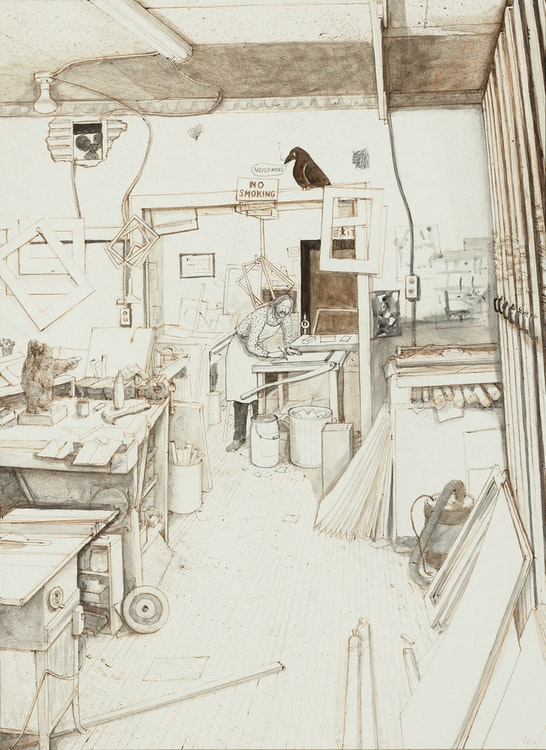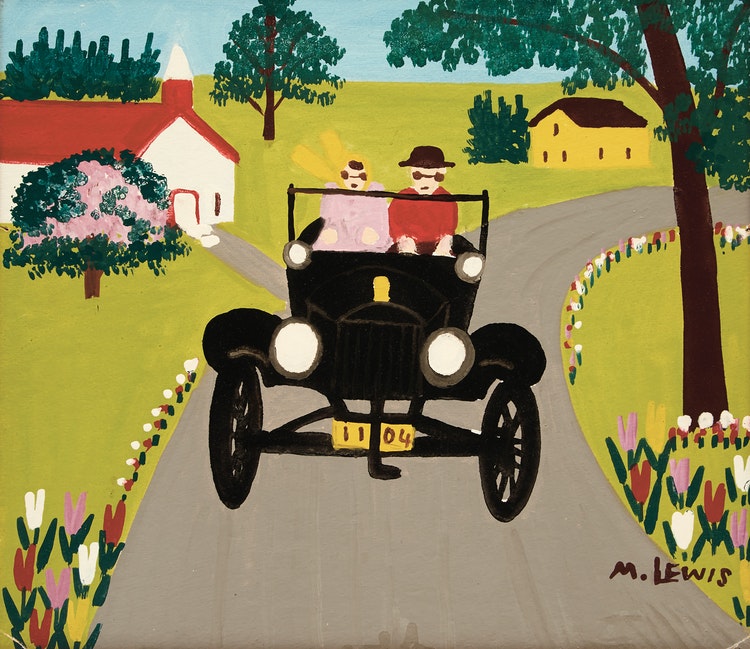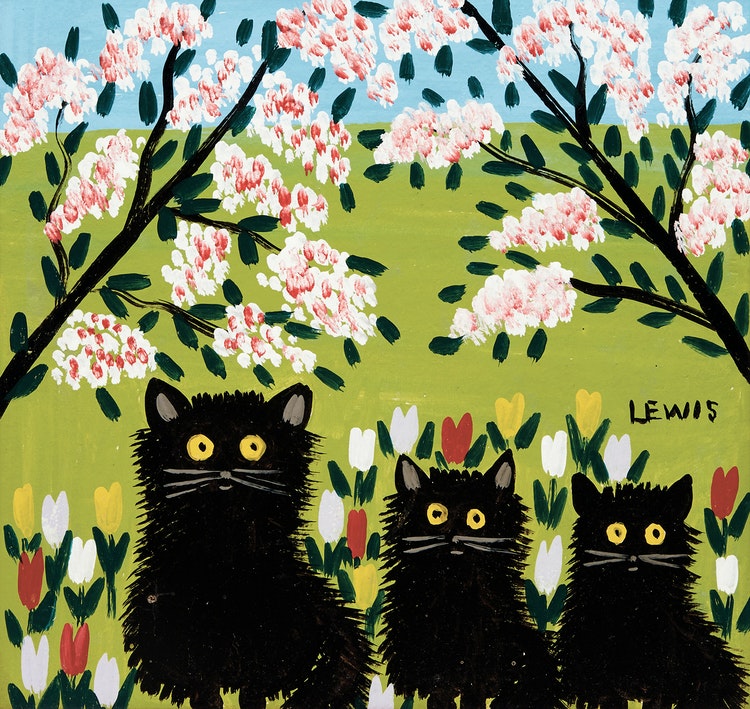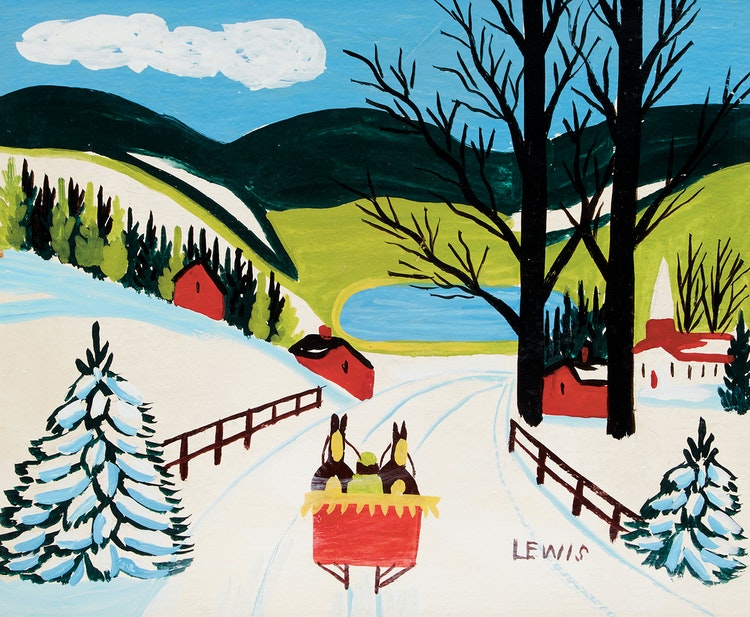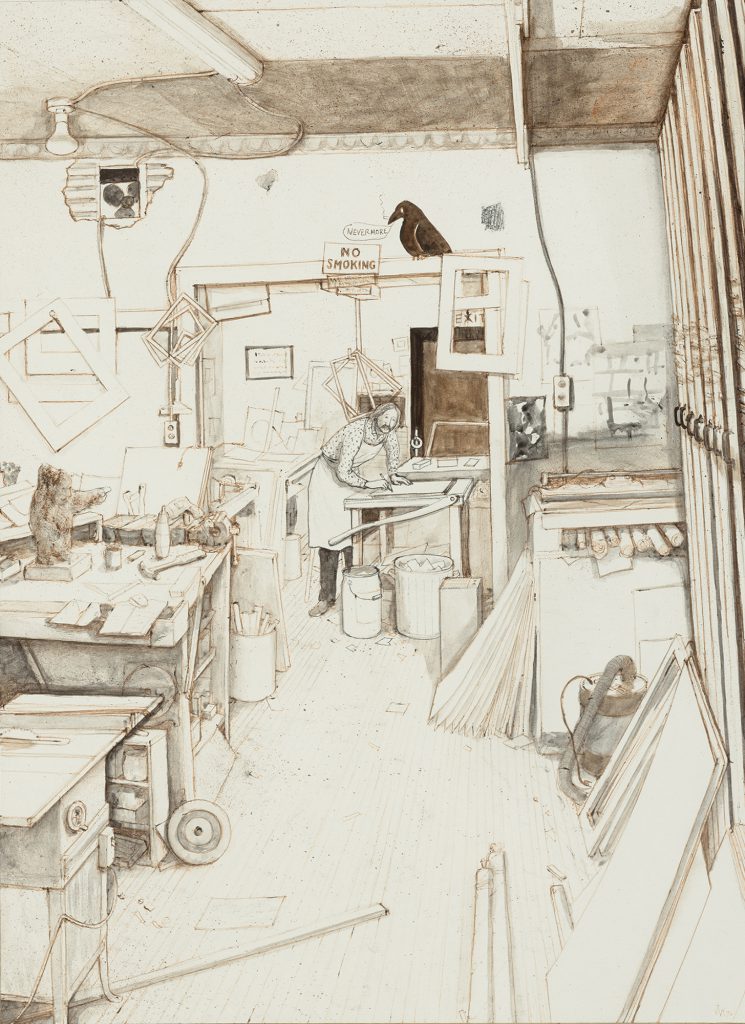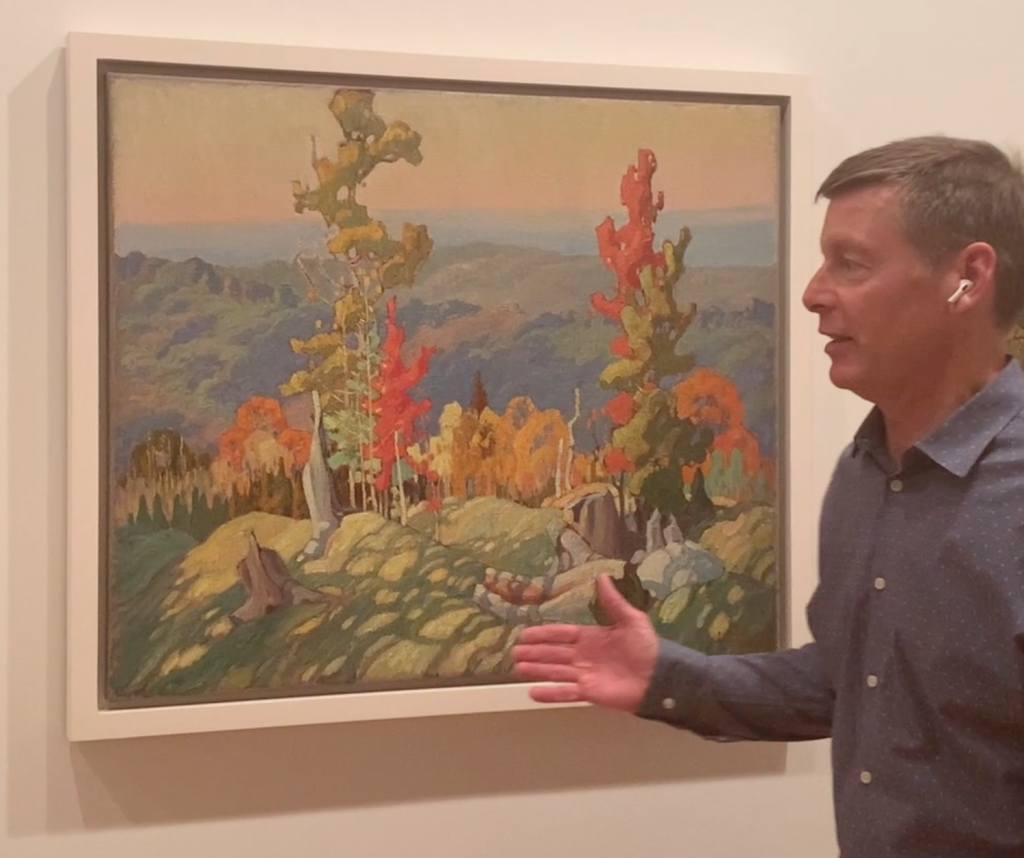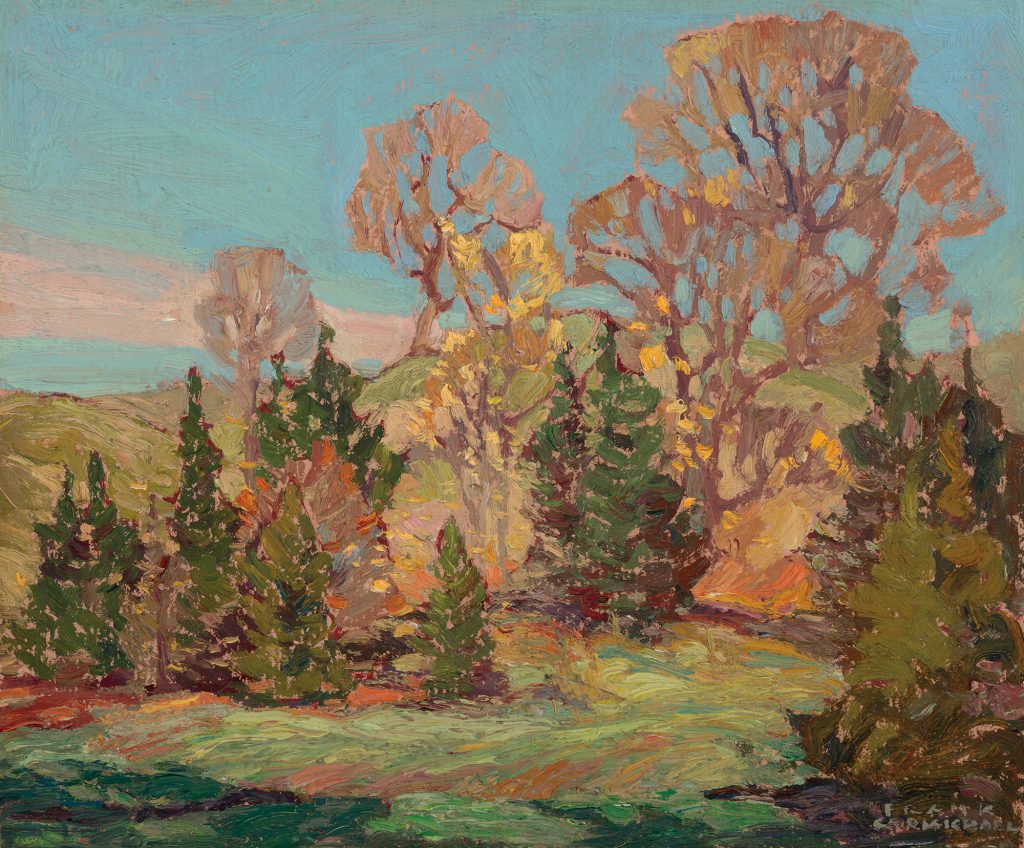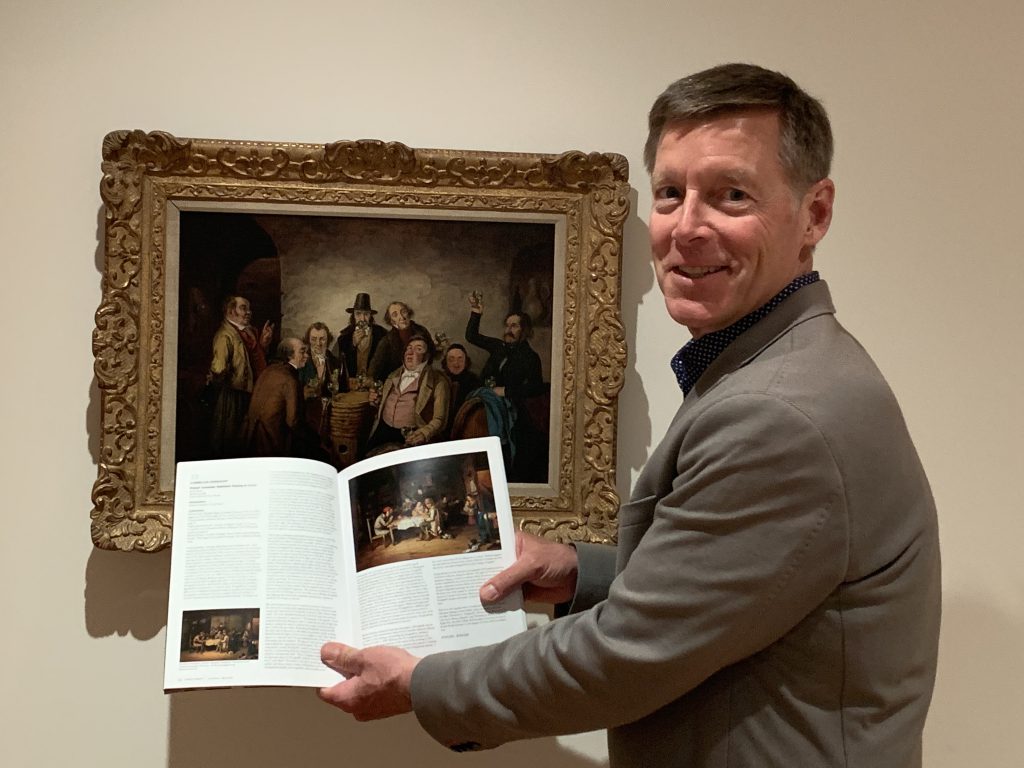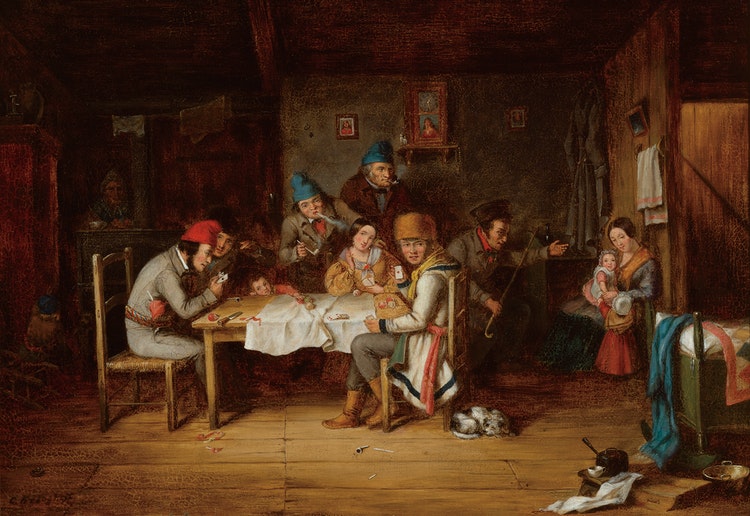Perry, our International Art specialist, highlights a selection of outstanding artworks included in the current Spring Auction of International Art. Take a moment to learn about these fantastic artworks. Bidding closes on June 28th!
The Young Craftsman
Painted the year the artist died, “The Young Craftsmen” echoes one of Rosenthal’s best known paintings, “His Madonna”, which was painted the previous year. The similarities seem endless from the likeness of the young boy working in his white shirt with a red handkerchief stuffed into his blue apron to his wooden workbench with his carving tools splayed in front of him and wood shavings littering the floor. However, where “His Madonna” positions the viewer at a more distanced vantage point, “The Young Craftsmen” creates a more intimate portrait of the young subject by bringing the viewer in closer to the scene. The boy’s face is turned slightly toward the viewer which invites us into a more personal connection to the sitter.
“The spectacle of the sky overwhelms me. I’m overwhelmed when I see, in an immense sky, the crescent of the moon, or the sun. There, in my pictures, tiny forms in huge empty spaces. Empty spaces, empty horizons, empty plains – everything which is bare has always greatly impressed me.” -Joan Miró
Two Abstract Sculptures
Vincenzo Amato was born in Palermo, Italy in 1966; he is primarily known as an actor appearing in numerous films and tv shows. Early in his artistic career he had a couple of exhibitions at gallery Il Gabbiano in Rome. In the early 1990s he arrived in New York for a wedding and never left, continuing to pursue a career as an actor and sculptor, exhibiting his work at the Earl MacGrath Gallery.
Figura
In 1935 Kingman submitted a controversial work to Ecuador’s esteemed Mariano Aguilera Prize. It caused outcry among the conservative jury and was rejected from the competition. However, the following year Kingman’s peers championed him and the same work won first prize in the same competition. The moment lead to Indigenism being adopted as the dominant artistic style in Ecuador. In the 1930s Kingman painted indigenous workers in a monumental style that emphasized their human suffering. After World War II, he expanded his themes to include all human deprivation to capture the universal humanity of his subjects.“Figura” depicts a lone woman, with her head resting in her hands. The artist forms a triangular composition that leads the eye upwards towards the subject’s half obscured face. The oversized cupped hands magnify her despair with every etched line. The worn, crimson knuckles emphasize her suffering. Kingman was known for his exaggerated, expressive style, which we see here in this lovely example of his work.
Woman and Man Bench
A wonderful bench by John Risley, an American designer and craftsman. Risley studied at the Rhode Island School of Design and the Cranbook Academy of Art in Michigan, before moving to the Philippines and later to Taiwan to work for the state department, absorbing influences from those cultures in his work. Risley produced these benches as a series, some executed in red and some in black. The idea was to make these art objects both functional and decorative.
Maternal Embrace
A member of the ancient house of Troubetzkoy by birth, Prince Paolo (Paul) Troubetzky was the son of a Russian diplomat and American singer Ada Winans. Largely self-taught he did come under the influence of Guiseppe Grandi, an avant-garde sculptor who was associated with the Scapigliatura movement. Troubetzkoy was a passionate animal activist and vegetarian, keeping a menagerie of animals in his studio, which became the subjects of some of his sculptures. He moved in the gilded age circles of the day, sculpting portraits of the rich and famous. In “Maternal Embrace”, the subtle play of light across the deep modeling of the figures as they emerge from the folds of the dress, captures a tender moment between a mother and her child. The plaster for this work dates from 1898 and is housed in the collection of the Museo Del Paesaggio, Verbania.
The Spring Auction of International Art closes for bidding on Tuesday, June 28th. Find more information about the artworks included in the auction here: https://cowleyabbott.ca/items/1178 and contact our Perry for more information at [email protected].

